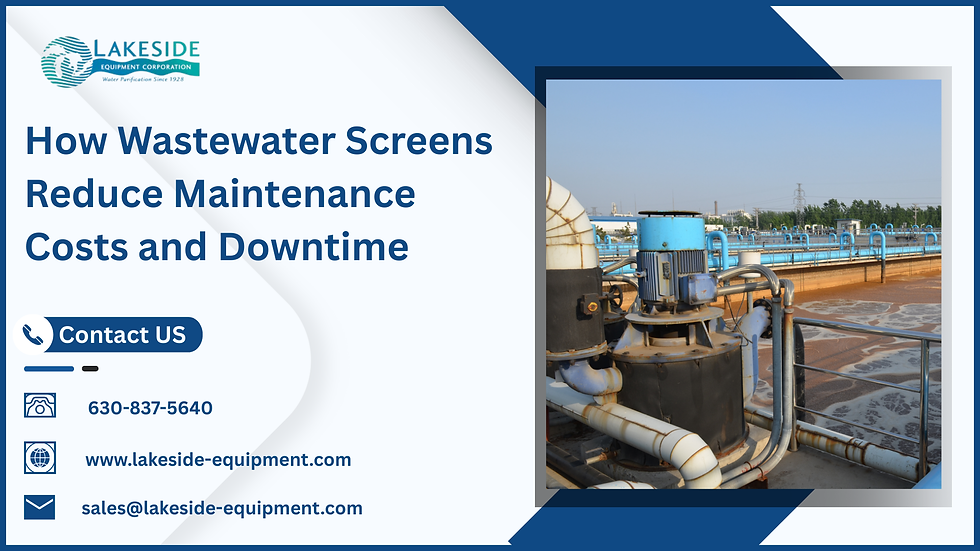Essential Elements for Wastewater Treatment: Clarifiers, Screens, and Biological Systems
- lakesideequipment

- Aug 21, 2024
- 3 min read
Wastewater comes from residential areas and industrial complexes after that enters the environment. Wastewater treatment is the practice to keep the environment healthy and the water supplies safe. There are different stages with specialized equipment to perform particular tasks.
This blog will provide the key elements of a wastewater treatment process, including the functions of wastewater clarifiers, sludge screening systems, biological treatment options, and finally, wastewater screens.
How Wastewater Clarifiers Work?
Wastewater clarifiers are essential for both treatment steps. It eliminates solids from the wastewater through sedimentation. Clarifiers work by allowing the solid particles to settle at the bottom of a tank, where they can be collected and removed.
Primary Clarifiers: During the primary stage of treatment, the clarifiers clear large solids and particulate matter from wastewater.
Secondary Clarifiers: During the process of the secondary treatment itself, the treated water is separated from the biological sludge by the secondary clarifiers. This settled sludge is either returned for reprocessing or sent for further treatment to prepare it for its final disposal.
Efficiency and Maintenance: The efficiency of a wastewater clarifier is comprised of three important elements: proper design, flow rate, and regular maintenance.
Sludge Screening Systems Work
It works by withdrawing larger particles from the sludge and then it is further processed. These are essential in bypassing blockages and maintaining the ability to dispose of the sludge.
Purpose and Function: The purpose of a sludge screening system is threefold protection of downstream equipment from resultant large debris damage. Other than that, the system helps in maintaining the overall efficiency of the wastewater treatment plant by removing materials at an early stage in the process.
Types of Screening Systems: Sludge screening systems can be classified into coarse screens, fine screens, and micro-screens. All these are designed to remove particles of size ranges such that the sludge can be prepared properly for further treatments.

Biological Wastewater Treatment
Biological treatment breaks down organic matter and reduces pollutants. This stage makes use of microorganisms that consume, and then transform, harmful substances into less harmful ones.
Activated Sludge Process: It is the most common method of wastewater biological treatment belonging to the activated sludge process. The process works by mixing the wastewater with a microbial population, provided with aeration to mix and break down the organic matter efficiently.
Trickling Filters and Bio-Towers: Trickling filters and bio-towers are other biological treatment processes using a fixed bed of microorganisms over which wastewater is trickled for treatment.
Wastewater Screens Work
Wastewater screens are at the top of the treatment process to remove large suspended solids and safeguard the equipment.
Wastewater Screen Types: These may be of three types: bar screens, drum screens, and step screens. Each of these types would again be compatible enough to accommodate the variations in flow and nature of the debris.
Protecting Downstream Equipment: Wastewater screens prevent large debris from getting into pumps, pipes, and other equipment early in the treatment process, thus avoiding or, at the very least, minimizing damage. This reduces maintenance costs and extends the life of a treatment plant.
Treatment Efficiency Improvement: This effective screening relieves the load on the downstream process, thus smoothening the entire treatment process and improving the quality of effluent at the outlet.
Conclusion
It is a complex process using different technologies and equipment to make it more effective. Wastewater clarifiers, sludge screening systems, biological treatment, and wastewater screens all play important roles in making sure that the treatment plant runs efficiently and provides clean and safe water.




Comments